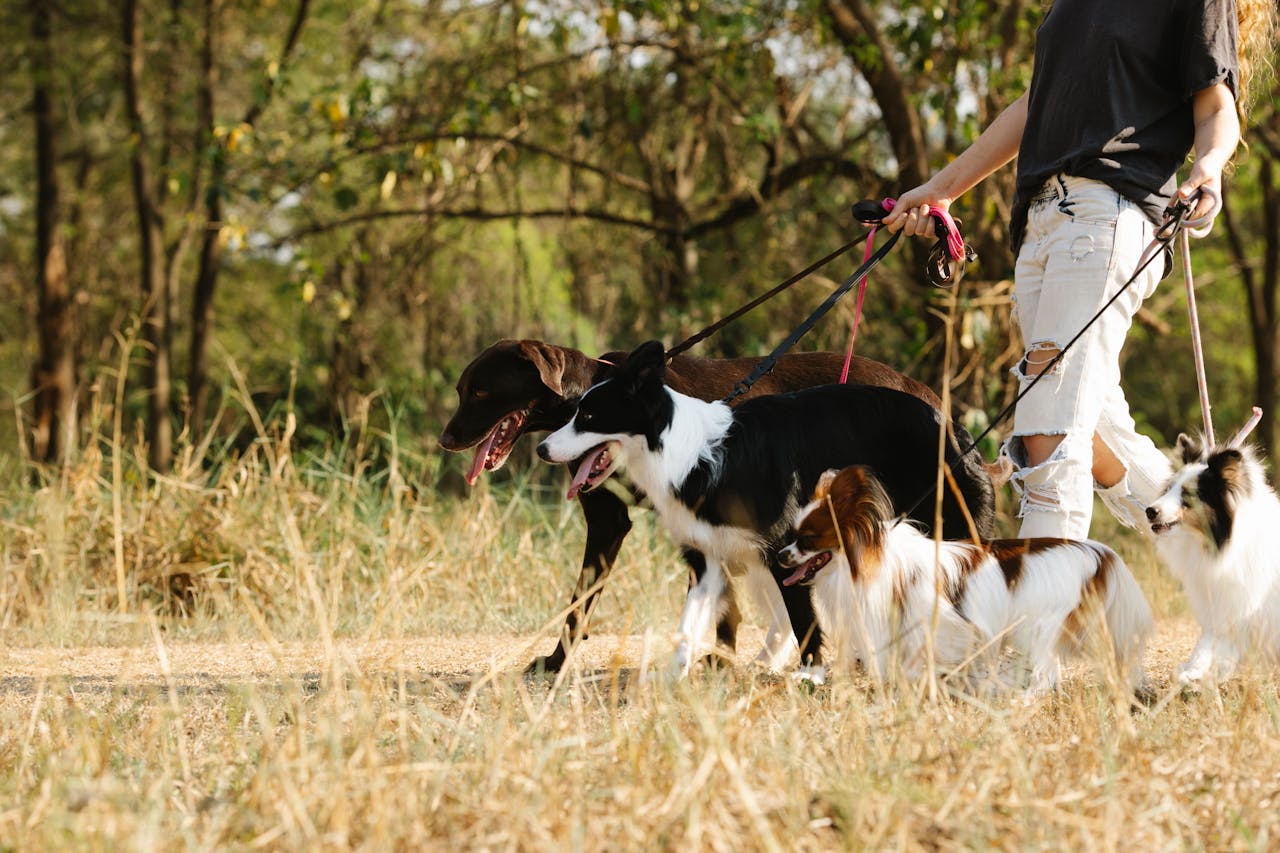
Dogs can build trust and strengthen relationships between people and the communities they live in. (Pexels Photo)
A series of recent attacks by XL bully type dogs in the UK, and government attempts to both define and control the breed, has refocused attention on how society manages “dangerous dogs”.
Much media coverage focuses on the trauma that pets or humans endure after they’ve been attacked by an XL bully, or protests from XL bully owners that their dogs are being unfairly singled out.
But my research showed that many owners have to deal with problematic behaviour when walking their dogs. Many of my research participants advocated closer control of all dogs in public, or at least a recognition that some dogs need to be given more space.
From February 2024 it became a criminal offence to own an XL Bully dog in England and Wales unless it has a certificate of exemption, third party insurance, and is leashed and muzzled in public.
But aggression and other unwanted behaviour are not restricted to certain breeds. Even pets from usually docile breeds can display confrontational behaviour while out for a walk.
Owners often resort to great lengths to manage these behavioural challenges, demonstrated by the many television programmes on dog training that are a staple of evening schedules (such as Channel 5’s Dogs Behaving Very Badly).
I explored the experiences of caring for dogs that fall short of our expectations. It detailed the social and emotional toll for owners, who reported feelings of exclusion and dislocation. The research also identified the tactics adopted by walkers in an attempt to make walks a more convivial experience.
Walking that ‘wild dog of yours’
It is long recognised that dog walking has health and social benefits for both the walker and the dog. Dogs can build trust and strengthen relationships between people and the communities they live in. However, many dogs have behavioural issues that limit these benefits.
My interest in this topic stemmed from my experience of adopting Tommy – a Jack Russell who lived for around 16 years. On walks, Tommy barked and strained at other dogs. His behaviour became so extreme it prevented any amiable interaction with fellow dog walkers. One family member once referred to him as “that wild dog of yours”. Walks were isolating experiences for my partner and I, rather than a source of social interaction.
Realising that I was not alone in this experience prompted my research.
Participants described a catalogue of incidents where their dog’s behaviour created tension with – and detachment from – fellow walkers. One spoke regretfully about how their experience didn’t live up to their romanticised expectations of having a dog. Another described how their dog’s behaviour solicited gazes of disapproval from other dog walkers:
“People look at you, staring. Sometimes they’ll say something too – like tell you what to do. ‘Let him off the lead’, or ask ‘can’t you train him better?’ They probably don’t mean to make you feel bad but you still do.”
My research also documented how some encounters led to confrontation between owners.
Several respondents were concerned about the behaviour of other dogs, particularly those unleashed and free to “invade” their dog’s space. One interviewee said:
Dogs that are off the lead are a real pain … They’re not actually being aggressive – just want a sniff and to say hello. But you know my dog is aggressive and under control. Your dog might not be aggressive – but is it under control? I don’t think so!
Negotiating troubled dog walks
Walks sometimes left human companions feeling frustrated with their dogs, isolated from fellow walkers and alienated from their local community. This was not what they believed owning a dog would entail.
Yet owners retained an acute sense of obligation to walk their dogs, adopting a careful choreography to avoid social contact with fellow walkers.
This ranged from choosing specific routes to avoiding crowded areas or walking at quieter times of the day. They also made tactical use of features on streets and neighbourhoods. For instance street furniture, vegetation, and parked vehicles were used to disrupt sight lines between dogs.
Others walked in places where dog access or freedom was restricted in the hope that the animals they encountered would be more predictable:
I love seeing dog walking restrictions, when it’s the lambing season or places where dogs are allowed but only on leads…you’ll come across dogs but they won’t get up close and personal
Ironically, many owners avoided dog-friendly places such as parks, pubs, cafes and events.
There were, however, more positive experiences. Walkers described how their attempts to accommodate problematic behaviour led them to seek new, previously unexplored places where dogs aren’t allowed off the lead. Small networks of walkers with similar experiences formed, forging the solidarity and sociability that many had hoped dog companionship would have brought from the outset.
Some dogs just need more space
My research provides an insight into the challenges that many face when venturing into the outside world with a dog that is nervous, anxious or that displays aggression.
Greater awareness of why many dogs must be under close control, education campaigns on leashing and ultimately the encouragement of more responsible dog ownership is required to ensure there is space in society for all our canine companions.![]()
Paul O’Hare, Lecturer in Human Geography and Urban Development, Manchester Metropolitan University
This article is republished from The Conversation under a Creative Commons license. Read the original article.





















